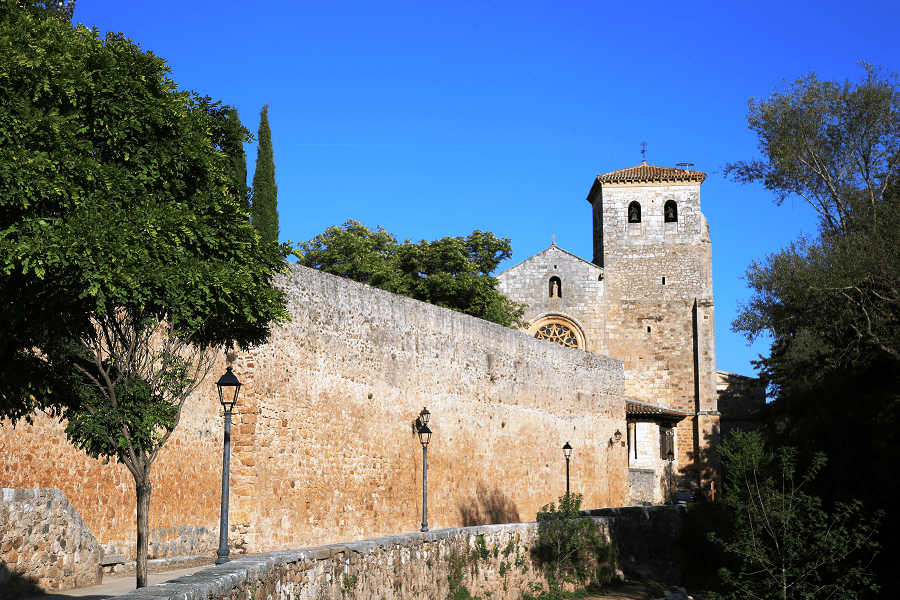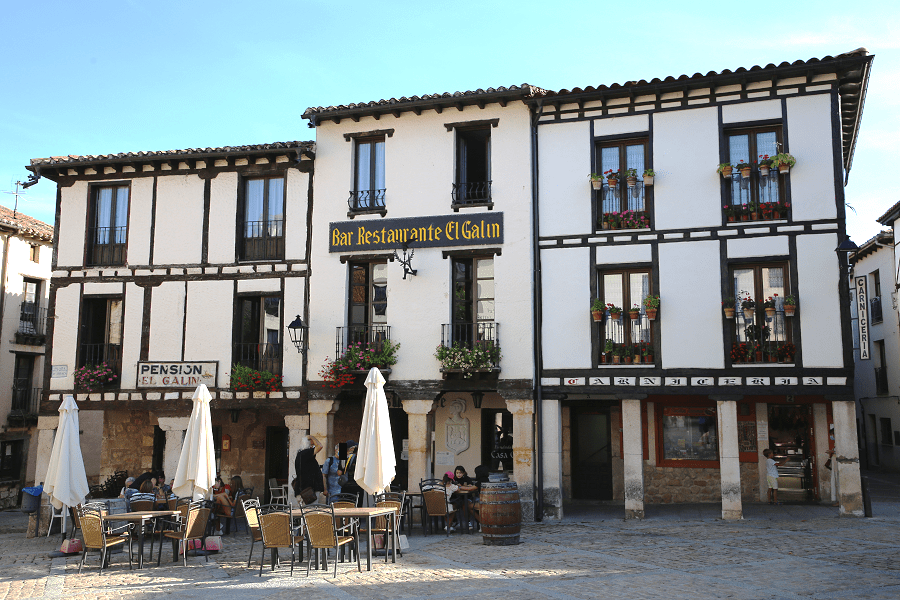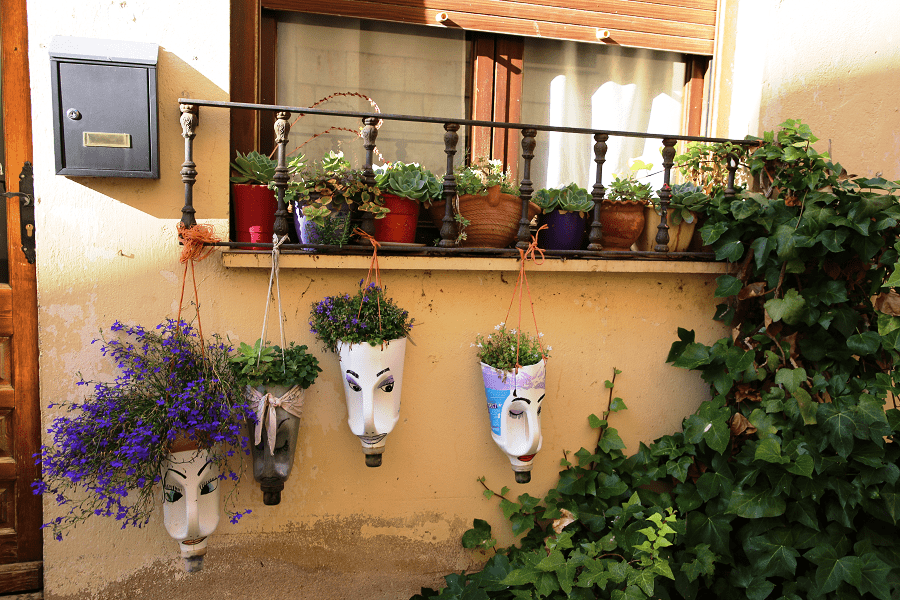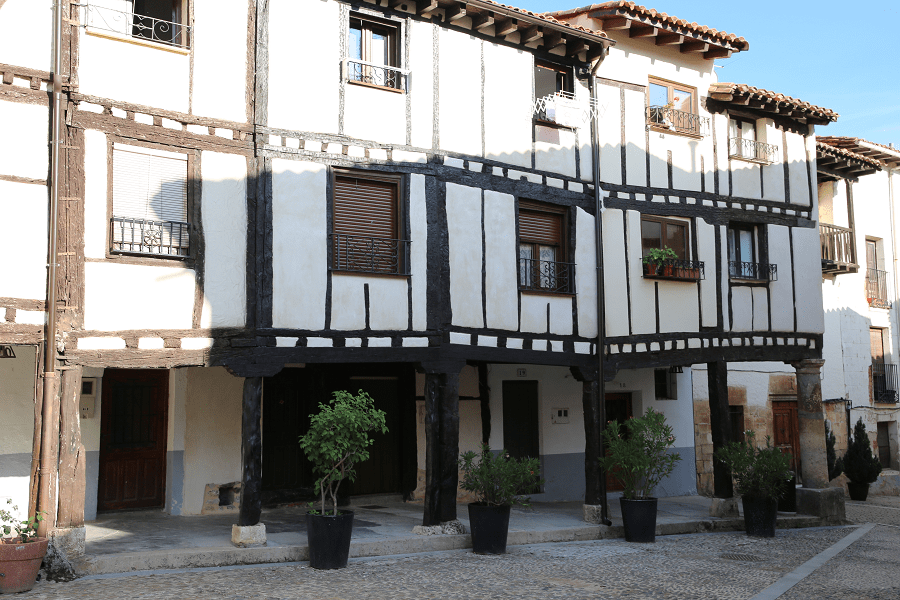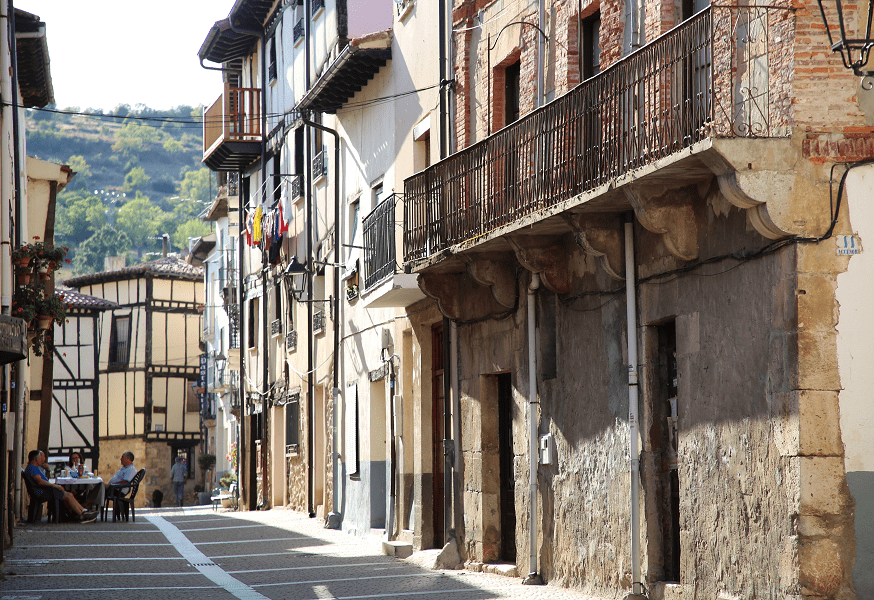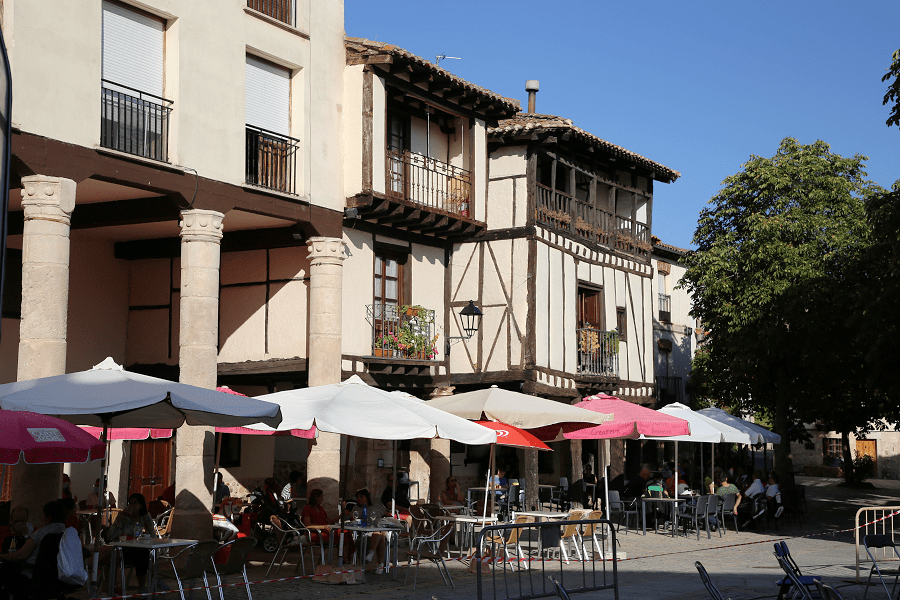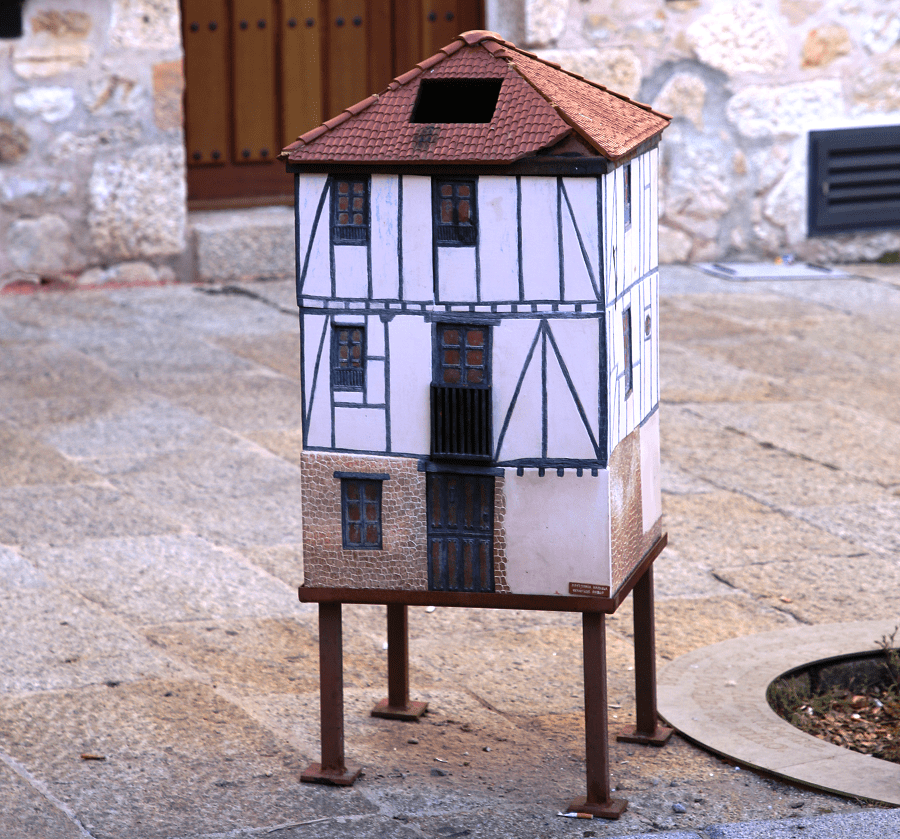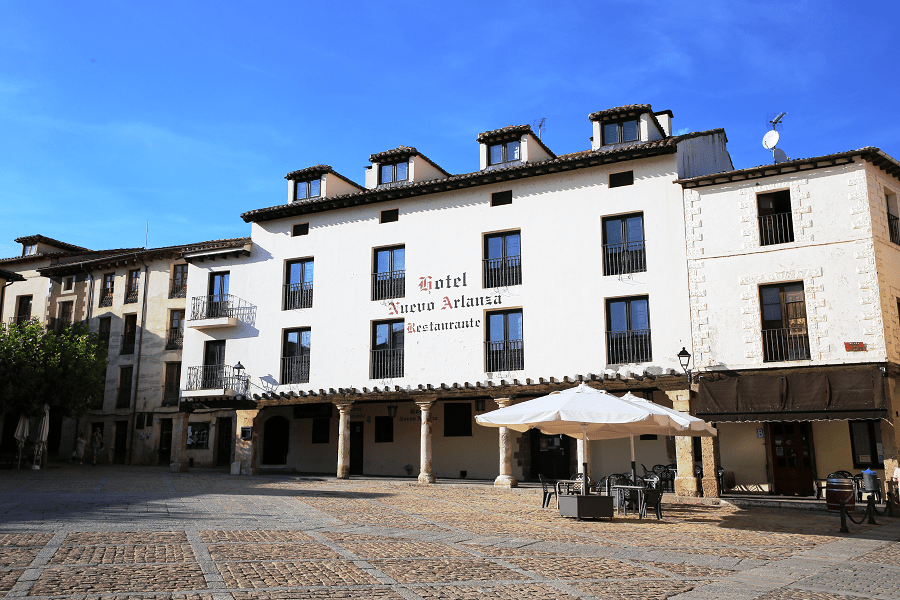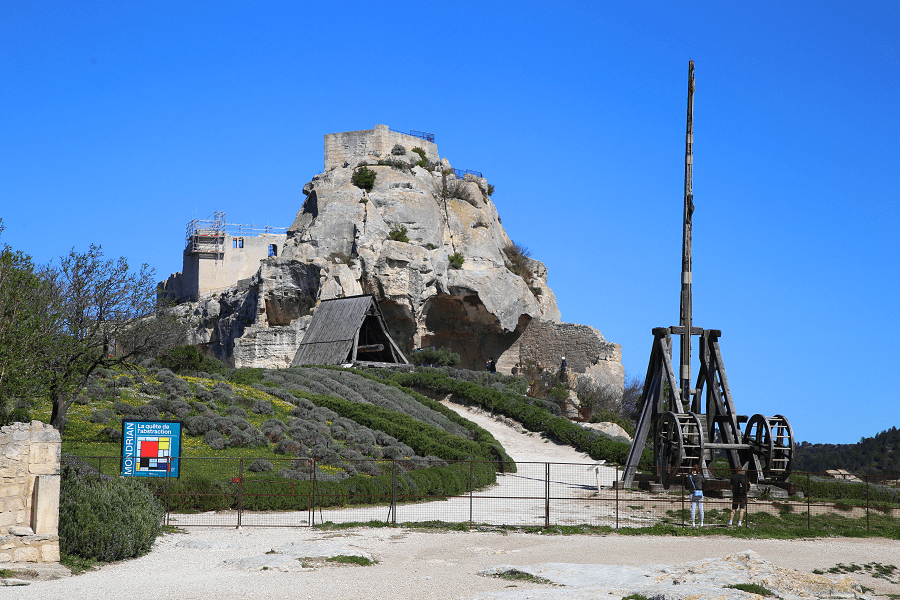Covarrubias is a city and municipality in the province of Burgos in the autonomous community of Castile and León, Spain.
In the 10th century, the Count of Castile Fernán González and his son García Fernández made Covarrubias the capital of the Infantazgo de Covarrubias and head of one of the most important monastic manors. For this reason this population is known as “The cradle of Castile”. Declared a National Historic-Artistic Site in 1965.
It presents a well-preserved urban framework, together with a wide monumental heritage, in which the Torreón de Fernán González stands out, the only Castilian fortress prior to the 11th century that is preserved.
Touristically, it forms with the neighboring towns of Lerma and Santo Domingo de Silos the so-called Arlanza Triangle.
Since 2017 the city has been a part of the network “The most beautiful villages in Spain“.
It is a popular part of the Camino del Cid hiking route.
Tourism and main attractions
The tower of Doña Urraca or tower of Fernán González is a construction that has the designation of Asset of Cultural Interest. According to legend, Doña Urraca, daughter of Count Fernán González, would have been locked up in the tower.
Fernán González (died 970) was the first autonomous count of Castile. Fernán González was a colourful character of legendary status in Iberia, and founder of the dynasty that would rule a semi-autonomous Castile, laying the foundations for its status as an independent kingdom.
In the year 930, Fernán’s name appears with the title of count inside the administrative organization of the eastern Kingdom of León.
The building is currently listed as an Asset of Cultural Interest, after having been declared a “Historic-Artistic Monument” on June 3, 1931.
The parish church of San Cosme and San Damián de Covarrubias is a Catholic temple that had the dignity of a collegiate church, a term by which it is still known today.
Currently, it is considered a BIC (Object of Cultural Interest) (it was declared a Historic-Artistic Monument belonging to the National Artistic Treasure by decree of June 3, 1931).
The current church, late Gothic, was begun in 1474, and was built on top of an earlier Romanesque one commissioned by Abbot Diego Fernández, chaplain of King Enrique IV, and the works continued during most of the reign of the Catholic Monarchs.
It has a Latin cross floor plan and three naves, the central nave being higher than the lateral ones. The naves and the transept are covered by a sexpartite vault. Along the church are the tombs of the Martínez Lerma, Fernández Velasco, Gil de Ramales, Cisneros, Fernández de Castro, Fernández de Solarana, Villegas and others families. The organ is from the second half of the 17th century.
The Church Museum exhibits different pieces of sacred art, such as Romanesque capitals, Berruguete panels, goldsmithing by the master of Calahorra and liturgical clothing from the 16th to 18th centuries.
Walls. Until the second half of the 16th century, Covarrubias was completely walled. It was then that, in order to combat a plague that was ravaging the town, the divine Valles, Philip II’s personal physician, and a native of Covarrubias, ordered the walls to be demolished so that the wind would clean up the streets.
The wall must have had three doors, the one corresponding to the entrance through the bridge lasted until 1888, and is represented in the shield of the town.
In any case, Covarrubias still conserves a good sample of those tremendous walls, both on the side of the river (Paseo de la Solana), and inside the town, next to the Church of Santo Tomás.
The Santo Tomas Parish church was built in the 12th century, but a little remains of the original. The one we can see today is from the 15th century, although it retains some remains of the original in the right nave.
In the church of Santo Tomás the organ is preserved which, although less old than the one in the Collegiate Church, since it dates from the 18th century, still sounds amazing.
The building has many interesting components such as its collection of altarpieces, the Renaissance stained glass window that represents the nativity, the beautiful baptismal font, which is the original and therefore Romanesque, and of course the plateresque staircase, the “jewel” of the church.
The original altarpieces were replaced in the Baroque period. The main one, neoclassical from the 18th century, shows the Assumption of the Virgin.
Another interesting altarpiece is the one dedicated to Saint Joseph, which frames three Hispano-Flemish panels from the 15th century.
How to get to?
From Burgos 36 min (41.7 km) via N-234 and BU-901
From Valladolid 1 hr 40 min (135 km) via A-62 and N-622
From Madrid 2 hr 30 min (235 km) via A-1
Main information
Area: 41 km² (municipality)
Coordinates: 42°03′33″N 3°31′12″W
Population: 539
Languages: Spanish
Currency: Euro
Visa: Schengen
Time: Central European UTC +1



